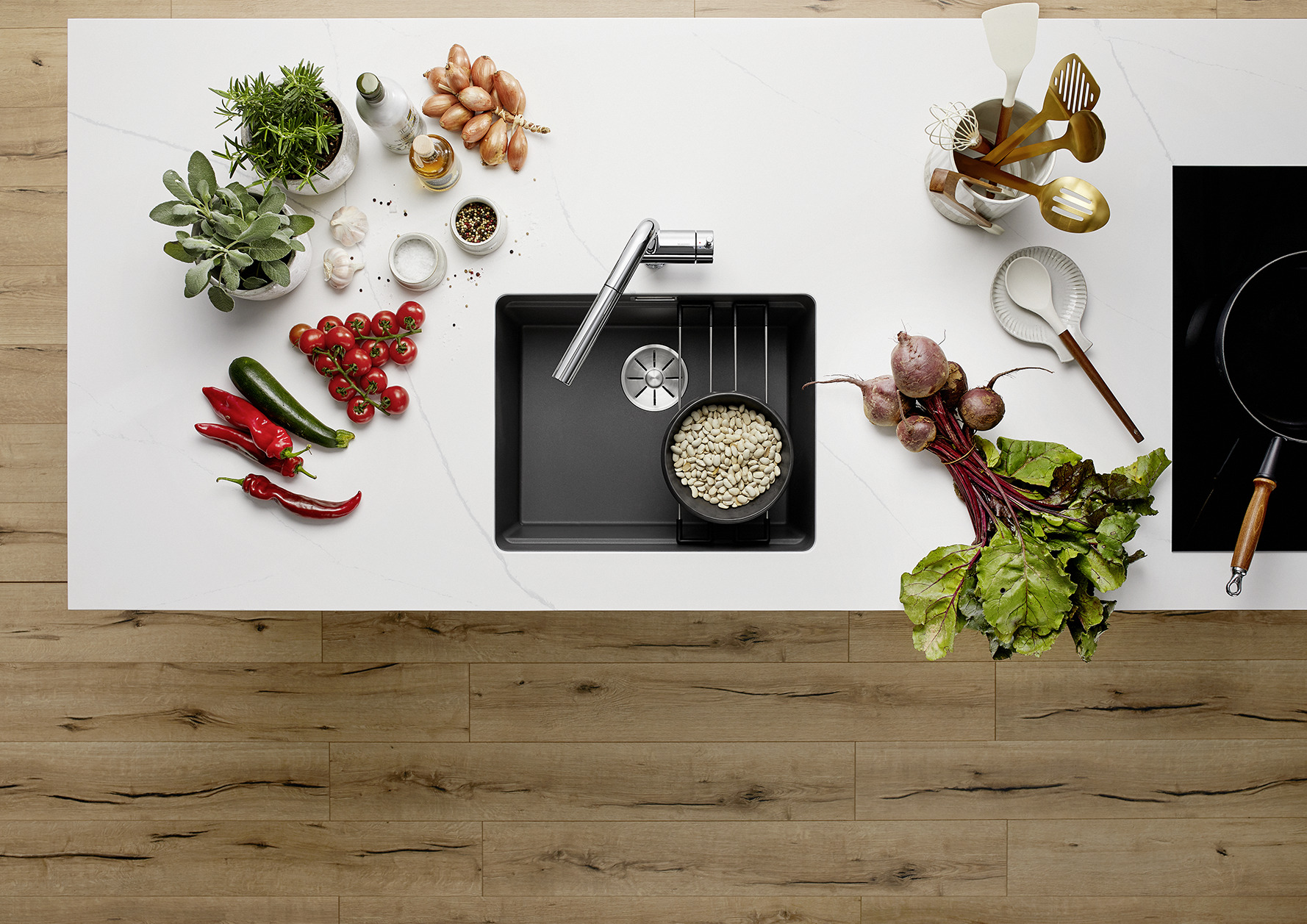HOW TO CARE FOR YOUR SILGRANIT SINK.

Silgranit sinks are extremely hard and resistant. This means that looking after them is really very simple. Nevertheless, when cleaning a granite sink you should be aware of a few things in order to keep enjoying the fantastic look and feel for as long as possible. This care guide provides advice on how best to clean Silgranit, from daily care to deep cleaning and removing stains.
REMOVING STAINS
Items like coffee, tea, red wine or beetroot will not permanently stain your Silgranit sink. Due to the composition of the material and the non-porous surface structure, dirt particles will not stick to the surface (the surface by nature actually repels water and dirt). However, dirt particles can stick to limescale, so you will need to remove the limescale in order to remove these stains. We recommend using BLANCO DailyClean+ as a first step and as a second step use DeepClean Silgranit Set to remove these stains.
REMOVING SCRATCHES OR METAL SCUFF MARKS
Silgranit is as hard as stone, which makes it resistant to scratching and cutting. The normal impacts and blows such as those caused by pots, pans and falling household objects will not cause it to crack of chip. However, if a very heavy item, or a pointed item like a knife is dropped into the sink, damage may occur here. Metal objects (pots, saucepans, baking trays etc.) can leave marks or metal residues on the Silgranit surface, but removing these dark lines and scuffs is easy. Follow these steps:
1. Apply some cooking oil to the soft side of a wet sponge
2. Clean the sink with the soft side of the sponge, using circular movements
3. The mixture of oil and water lifts the metal residues from the sink
4. Rinse your sink with clear, warm water until the oil is completely gone
5. Dry with a microfiber cloth
RESTING HOT APPLIANCES IN YOUR SILGRANIT SINK
Silgranit is extremely heat resistant. However, we do not advise taking a hot pan directly from a hob or ovenand placing it on the sink, as the pan could be over thethreshold temperature the sink can withstand. It would be advisable to let the pan cool down slightly on a heatproof mat, metal pan rest or on an old chopping boardbefore placing it directly on the Silgranit surface.
MAINTAINING THE COLOUR OF YOUR SILGRANIT SINK
Silgranit is made up of 80% quartz sand, the hardest part of granite, the other 20% are made of an acrylic matrix, BLANCO patented components and functional minerals as well as colour pigments. These ingredients combine to give Silgranit its unbeatable characteristics and is completely coloured through the material. Normal household use will not cause any discernible changes in colour. The colour also remains true in direct sunlight. Any discolouration and marks/stains are the result of limescale deposits that, when dry, they absorb liquids such as coffee, tea or red wine. This then creates the impression of discolouration of the sink surface. Limescale deposits are easy to clean using BLANCO DailyClean+.
CLEANING MISTAKES TO AVOID FOR SILGRANIT SINKS
Although Silgranit is a very durable material, there are cleaning products that you should not use to clean your Silgranit sink. These include:
– Bleach, diluted bleach or cleaning products containing bleach agents
– Drain cleaners
– Cleaners containing chlorine
– Lyes or other solvents
– Abrasive cleaners
These agents are very aggressive and can cause lasting damage to your sink. Avoid aggressive cleaning products, for example highly corrosive or solvent-based cleaning agents, as they may attack even hard, resistant granite surfaces. You can use BLANCO cleaning products (shown below) with confidence as these specially created for the material properties of Silgranit.
BLANCO CARE PRODUCTS FOR SILGRANIT SINKS AVAILABLE TO ORDER FROM OUR
– DAILYCLEAN+
ORDER CODE: 526305
– DEEPCLEAN SILGRANIT SET
(CONTAINS DAILYCLEAN+, DEEPCLEAN SILGRANIT
AND 2 SPONGES) ORDER CODE: 527033
– MICROFIBRE CLOTH
ORDER CODE: 126999
